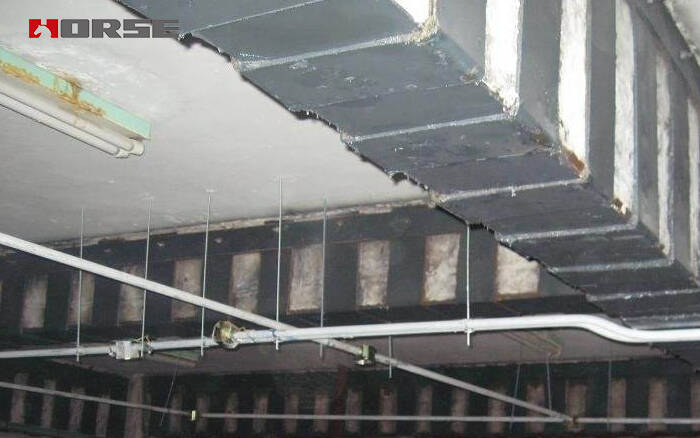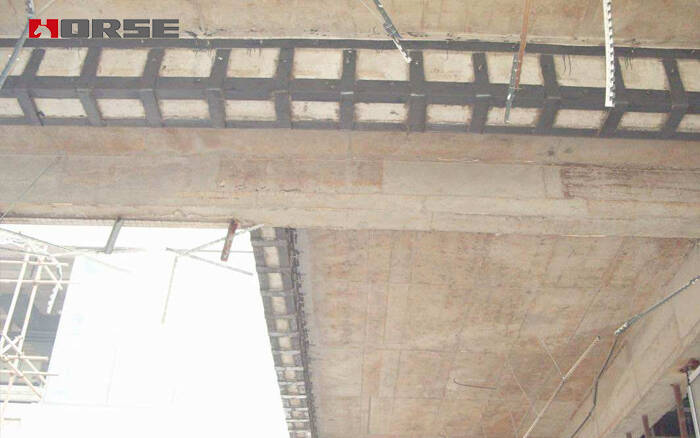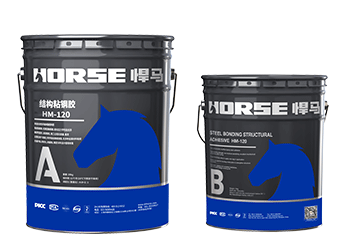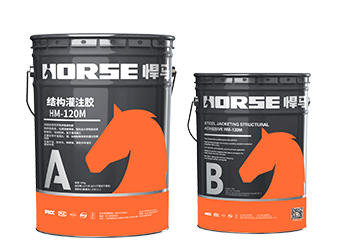Solutions
Horse Construction offers full range of structural strengthening materials with technical supports, documentation supports, products supports, project supports.
Factors affecting the bearing capacity of beams strengthened with bonded steel plate: length of steel plate anchorage; historical loading; reinforcement ratio of steel bar; anchorage measures at the end of steel plate

Four factors affecting the bearing capacity of beams strengthened with bonded steel plate
1. Length of steel plate anchorage
The anchorage length of steel plate has great influence on the bearing capacity.
The longer the anchorage length of the steel plate, the stress concentration at the end of the steel plate is relieved to avoid the cracking of the end concrete. After reaching the reasonable anchorage length at the end of the steel plate, it is of little significance to increase the length of the steel plate. In conclusion, the stress concentration phenomenon at the ends of beams strengthened with bonded steel beams is avoided only by proper anchorage length. The shorter the anchorage length is, the more serious the stress concentration phenomenon is. The lower the bearing capacity is, the easier the shear failure is, and the ductility is also poor. Once the end of the steel plate starts to fall off, it will further reduce the anchorage length and increase the stress concentration of the ends, and further accelerate the damage。
2.Historical loading
As long as the length of the anchorage is suitable, the steel plate and the beam can form an effective whole work. The steel plate can effectively restrain the cracks. The reinforced beam is independent of the load before, and it can reach its theoretical bearing capacity.

3.Reinforcement ratio of steel bar
Adhesively bonded steel plate is equivalent to increasing the reinforcement ratio, and the concrete beam has a large reinforcement ratio limit. When the original reinforcement ratio is close to the large reinforcement ratio, the increase of bearing capacity increases to 1. Therefore, if both of them are reinforced beams, the bearing capacity of beams with lower reinforcement ratio will be improved even if the steel plates are pasted in the same area. When the anchorage length is insufficient, when the steel plate is pasted in the same area, the bearing capacity is not increased obviously after the beam is strengthened.
The reason is that the stress concentration phenomenon at the end of the steel plate is very serious. The larger shear stress and the bending stress make the crack not too much to carry up, and the horizontal penetration crack along the longitudinal reinforcement is quickly formed in the weak part of the protective layer. But the longitudinal reinforcement can not restrain the development of the crack, and its shear strength is equivalent to the plain concrete beam, and the more longitudinal reinforcement, the more the shear ability of the joint is weakened, and the concrete is more easily tearing along the longitudinal direction of the bottom.Therefore, when the anchorage length of the steel plate is insufficient, the increase of reinforcement ratio will reduce the bearing capacity of the strengthened beam.
4.Anchorage measures at the end of steel plate
Due to the insufficient anchorage length of the steel plate, the end of the steel plate has a large stress concentration, which makes the reinforced beam shear failure, and its bearing capacity is much lower than the theoretical value. Therefore, the end anchoring measures should be taken to strengthen the bonded steel.
You can find anything here you are in need of, have a trust trying on these products, you will find the big difference after that.

Two-component epoxy modified epoxy structural strengthening adhesive for bonded steel plate to concrete

Modified epoxy resin structural perfusion adhesive, specifically for supporting adhesive bonded steel reinforcement